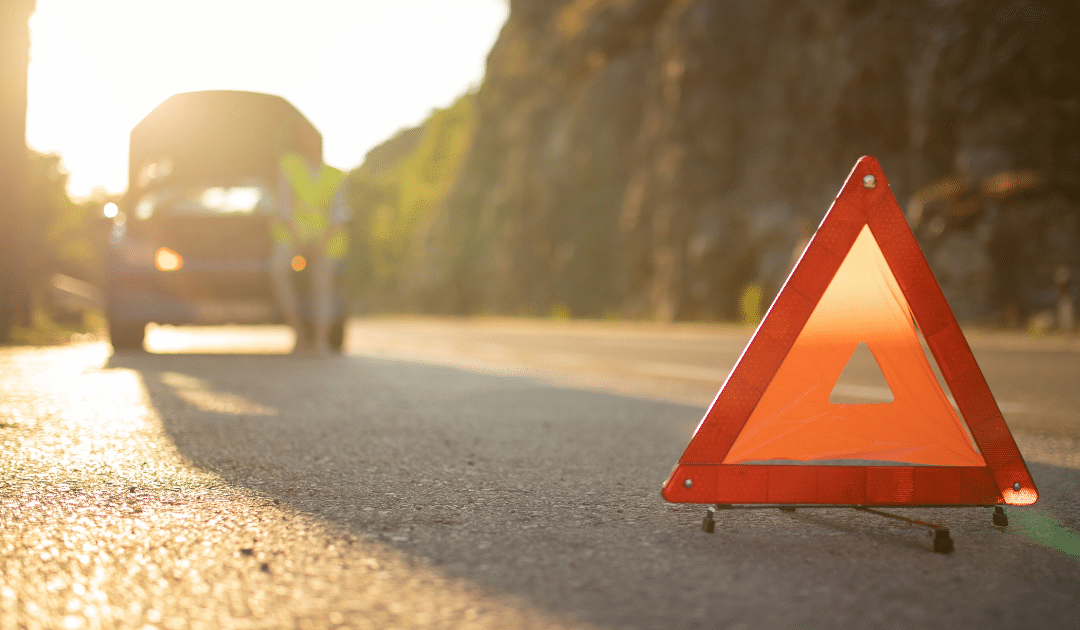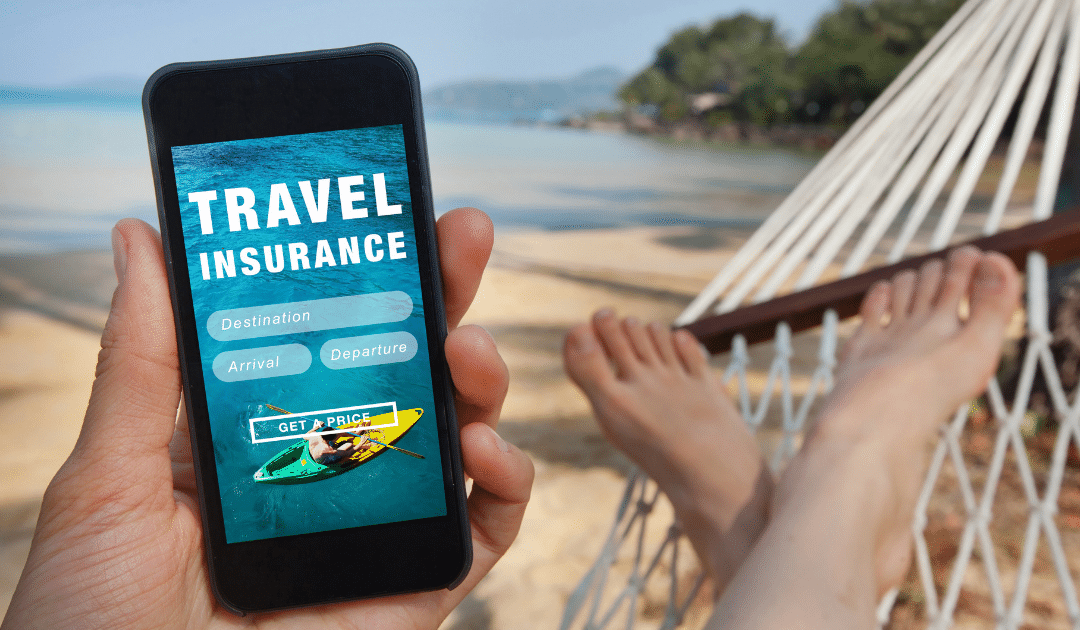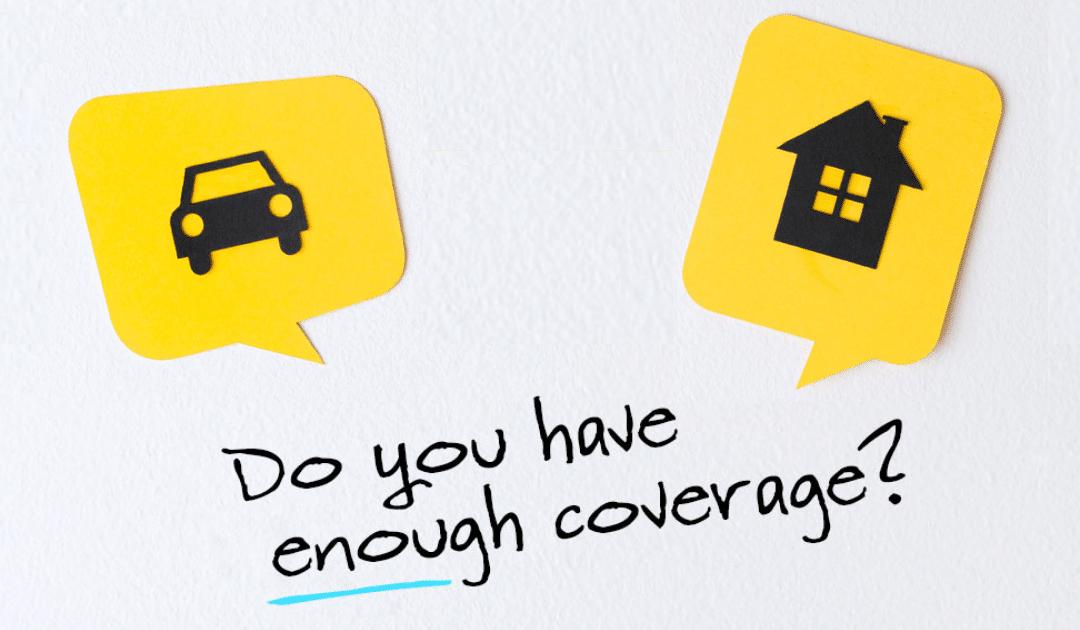
by California Casualty | Auto Insurance Info |
It’s hot… but you’re not the only thing feeling the heat. Rising temperatures are not only dangerous for us; they can also wreak havoc on our vehicles.
As the summer heat bears down in the midst of vacation and road trip season, here’s what you can do to help better protect your car on and off of the road.
How to Prevent…
Tire Damage
Your tires expand and contract in extreme temperatures. That’s why you find yourself losing more air in the winter and/or having overinflated tires in the summer. In general, you will lose or gain 1 PSI (pound per square inch) for every 10-degree temperature change. This means in the summer you could easily gain over 2 PSI. Not keeping your tires at the right pressure can reduce maneuverability and cause a blowout resulting in an accident.
To avoid tire damage in the summer, check them every few weeks to make sure you have the correct amount of pressure. Proper summer tire inflation will decrease your chances of having an accident, give you a smoother ride, and improve your gas mileage.
It’s better to be safe than sorry- if you are driving to a vacation destination, even if you just checked your tire pressure, be sure to have a spare on you just in case.
Engine Overheating
While an engine can overheat any time of the year, the summer heat will increase your chances. The high temperature itself, the heat coming off of the asphalt, and the ambient temperature surrounding the engine all play a factor in your engine becoming too hot. Of course, there are other factors that could also cause your engine to overheat including leaks, coolant problems, radiator issues, or even a damaged water pump.
So, how do you keep your engine from overheating? Routine maintenance is key for a healthy engine that can withstand the summer heat. Get regularly scheduled oil changes, frequently check your coolant levels, and replace old belts and hoses.
Unfortunately, sometimes overheating is unavoidable- especially if you have an older engine. And if an overheated engine is not handled properly, it can start a fire or ruin your vehicle. If your vehicle starts to overheat, turn off the A/C and crank up your heat. We know this sounds bizarre in the summer, but it will pull heat away from your engine and give you time to pull over to a safe location. Next, shut off your car for about 15 minutes. Keep an eye on your temperature gauge and make sure it starts to drop. If you haven’t already, this is where you will need to check and add your coolant, if needed. Finally, after giving it a few minutes rest, restart your engine and take it to your local mechanic.
Weakened Battery
Summer temps can also suck the life out of your battery. The heat leads to the evaporation of vital liquids resulting in a weakened charge. This can lead to corrosion which will damage the internal structure of your battery.
A heat-damaged battery won’t last long, especially once winter rolls around. To keep your battery in good working condition during the summer and prevent any weakening, park in the shade, keep your battery clean, limit short trips, avoid using electronics when the engine is off, and make sure your batteries’ heat barrier is still in place.
Watch for signs of your battery failing. If your battery light is on or your engine is slow to start it may be time for a replacement.
Fluid Leaks
The sun can evaporate important fluids in your vehicle, like coolant and brake fluid. Summer heat can also blow a head gasket or cause your gas to vaporize. When gas turns to vapor it increases the pressure in your gas tank and could potentially crack your hose systems. A cracked hose can lower your fuel efficiency, and if a hose were to break it could destroy your engine.
Keep your car in the shade, consistently check fuel levels, replace old hoses and belts, and continue with routine maintenance to decrease your odds of a leak. If you see a puddle, stain, or other types of liquid under your car after it has been sitting, it’s often a sign that you have a fluid leak and your car requires attention.
Other Interior & Exterior Damage
The heat won’t only affect your vehicle under the hood. It can cause fading, cracking, and other damage to your dashboard, seat, and exterior paint. And any one of these could be a costly repair.
Save yourself the money and stress and keep the sun from damaging your vehicle by keeping up with routine maintenance and cleaning, and also avoiding leaving your car in the sun whenever possible.
To protect your interior always
-
- Park in the shade when you can or use a sun-shield to protect your dash
- Cover your seats and steering wheel with covers to prevent fading and cracking
- Use detailing products to eliminate dust particles that could cause scratches
For the exterior remember to
-
- Keep your car in the garage or covered when you can
- Wash and dry your car often to get rid of debris that could fade your paint
- Wax your vehicle to give added protection against harmful rays
Stay safe in the heat and keep your vehicle safe too this season. Extend your vehicle’s life for the many summers ahead by following our tips and taking the proper precautions.
For more hot car, myths click here.
This article is furnished by California Casualty, providing auto and home insurance to educators, law enforcement officers, firefighters, and nurses. Get a quote at 1.866.704.8614 or www.calcas.com.

by California Casualty | Homeowners Insurance Info |
Planning to fire up the grill or gather around the fire pit this summer? While these fun activities are great ways to spend the season with your family and friends, they also come with a risk of fire-related injuries.
If you’re hosting an outdoor gathering or handling potentially hazardous materials like fireworks, it’s important that you take the proper fire safety precautions. Here’s what you need to know to stay safe and prevent an injury or accident this summer.
1. Fire Pits
There’s nothing better than taking advantage of your fire pit on a cooler summer evening. But if you haven’t set up for safety, there could be dangerous consequences.
-
- Position your fire pit so it is at least 10 feet away from your house and anything that can catch fire. This includes trees and bushes.
- Avoid burning treated wood, wet wood, or anything that gives off a gas or dense smoke.
- Don’t use flammable fluids to start or relight a fire. They can cause an explosion or turn a controlled fire into an uncontrollable one.
- Consider a fire screen to catch stray sparks.
- Have a fire extinguisher on hand and/or a bucket of water.
2. Barbecue Grills
Barbecues are the centerpiece of our summer celebrations. But cooking outdoors comes with its own share of hazards. Propane is used to power some grills. It is a highly flammable substance that can burn if it comes in contact with your skin. Charcoal briquettes also can cause burns and fires if not properly attended. Follow these tips for grilling safely.
For propane grills:
-
- Be careful not to overfill a propane tank.
- Check the connection between the propane tank and the fuel line to make sure there are no leaks. You can do this by making a solution of 50% liquid dish soap and 50% water, and brushing it on the hose connections. If there are leaks, you will see air bubbles when you turn on the propane.
- Store your tank in a safe location, upright and away from a heat source. Do not store a propane tank inside your house.
For charcoal grills:
-
- Use plenty of water to douse hot coals after you’re done cooking. Give them a stir to make sure there are no lit embers.
- Do not put the coal and embers in plastic, paper, or wooden containers after use. They could still be hot enough to start a fire.
3. Campfires
Sitting around the campfire and roasting marshmallows is a highlight of camping. But did you know that campfires can get as hot as 932 degrees Fahrenheit in just 3 hours? Their embers stay hot long after the fire is done—hot enough to burn someone who comes in contact with them eight hours later!
-
- Choose a location for your campfire that is away from dry grass and trees and from your tent.
- Add rocks around the perimeter of your campfire to help contain it.
- Enforce a 3-foot perimeter around fires that is the kid-free zone and pet-free zone.
- Never use gasoline to start a campfire or add it to an open flame.
- Put out your campfire before going to bed. Drench it with water and bury it with sand. That will help prevent the fire from starting again from the embers.
4. Fireworks
Fireworks are fun, festive, and a much-loved part of our patriotic celebrations. Yet fireworks send thousands of Americans to the ER every July. While you can enjoy the public fireworks without too much worry, doing them on your own requires a few additional safety precautions.
-
- Buy fireworks from a reputable seller.
- Store them safely away from children and pets in a locked box in a cool, dry place.
- Carefully read and understand all instructions.
- Avoid alcohol while using fireworks. Not only could it impair you, alcohol is highly flammable.
- Keep onlookers 60 feet away from the place where you’re setting off fireworks.
- Light one at a time. Light the fuse at the tip, not the bottom.
- A barbecue lighter works well to help keep fireworks at arm’s length.
- If a firework does not light, do not attempt to relight it. Wait at least 30 minutes to retrieve any fireworks that did not ignite.
- Never allow children to handle fireworks. Children ages 8 and older may hold sparklers with proper supervision. Sparklers could easily catch a child’s clothing on fire or cause blindness if in contact with a child’s eyes.
5. Lawnmowers
You may not think it, but your lawnmower is a fire risk. Any lawnmower, electric or gas, can catch fire and ignite items around them including your home. Fires may be caused by leaking fuel or fumes from a gas mower. Electric mowers may short circuit, causing a fire. In addition, a hot mower can ignite dry grass that is packed into it.
-
- Start mowing at your house and head away from it. This will reduce the chance that a hot mower is near your home.
- Never add fuel to a hot motor. Wait until it cools down.
- Avoid moving in hot, dry, windy weather, or if you do, wet down the grass first.
- Use a hose to clean out grass from mower blades.
- Make sure the area you’re mowing is clear of rocks. Even tiny rocks can cause a spark when it strikes the mower’s blades at high speed.
- Follow your mower’s recommended maintenance plan to ensure everything is in good working order.
6. Recreational Vehicles
Traveling in an RV is a dream. Having a fire in an RV is a nightmare. Powered by propane, a hazardous substance, and electric generators, which produce exhaust gases, RVs can be a fire risk.
-
- Make sure you have installed a smoke detector, carbon monoxide detector, and a propane leak alarm.
- Check the RV’s mechanical and electrical systems to ensure they’re in good working order.
- Look for frayed electric cords on any appliances in the RV.
- When cooking, never leave the stove unattended.
- Store clothes and flammable objects away from the cooking area.
- Store the propane tank outside, but not in the back or you could be at risk in the event of a rear-end collision.
- Let the generator cool down before refueling.
- Add RV coverage to your insurance policy.
7. HVAC (Heating, Ventilation, and Air Conditioning) Systems
During the summer, we run our air conditioning for long periods of time. Hot temperatures can strain air conditioning units. If your system is dirty, it could short circuit, causing a fire to start.
-
- Have your HVAC system cleaned at least once a year.
- Replace vents and exhaust fans as needed.
- Check your smoke detectors to make sure that they are in working order so they may warn you of a fire.
This article is furnished by California Casualty, providing auto and home insurance to educators, law enforcement officers, firefighters, and nurses. Get a quote at 1.866.704.8614 or www.calcas.com.

by California Casualty | Travel |
If you’ve ever had to cancel a vacation or had an accident with a rental car, you know the value of insurance. But how much travel and rental car insurance do you need and do you really always need it?
Types of Travel Insurance
The two most popular types of travel insurance are…
- Vacation Plan. It provides the most coverage in a single policy, including trip cancellation, lost luggage, travel delays, emergency medical assistance, and more. This type of plan usually comes with 24/7 assistance.
- Medical Plan. Your health insurance policy doesn’t cover you outside the U.S.— or if it does, it’s often not a lot of coverage. Travel medical plans cover healthcare expenses and can connect you with a local doctor or pharmacy. Some plans cover pre-existing conditions. They also cover emergency medical evacuations, if you need to be airlifted to a hospital.
There also are specialty travel policies that you can buy. These include medical evacuations only, accident insurance, and rental car insurance. Read more about rental car insurance, below.
Why you need travel insurance:
-
- You don’t want to lose all your money from a prepaid trip that has to be canceled (for illness, a funeral, etc.).
- Flights can be delayed, necessitating unexpected expenses for meals and lodging.
- Lost luggage can spoil your trip.
- Accidents happen and health crises occur. Medical evacuations can be costly.
- Travel insurance can provide peace of mind, and assistance when you need it.
What to look out for in a travel insurance plan:
-
- Make sure you insure the full value of your trip. If you just insure your deposit, that’s the amount you’ll recoup.
- Make sure your plan has enough for emergency medical evacuation. This can sometimes be in the thousands of dollars.
- Know the services that come with your policy. It could include translation, concierge services, and 24-hour travel assistance. If you’re paying for these services, you might as well use them.
- Watch out for “cancel for any reason” coverage. Usually this is a substantial extra expense, and in most cases, is not needed. Check the reasons that you can cancel for the standard policy. Usually, those will cover what you need.
Types of Rental Car Insurance
Rental car insurance is a specialized kind of travel insurance. You can purchase rental car insurance as an add-on with many travel insurance policies. You will be offered the opportunity to buy rental car insurance when you rent a car. These coverages are all optional.
Following are the types of coverage you may be offered:
-
- Collision/Loss Damage Waiver – This covers the cost of repairs in the event of an accident. Rental car companies can charge you for more than just the damage. They can also bill for towing charges, loss of use, diminished value, and administrative fees.
- Supplemental Liability Protection – If you cause an accident, liability pays for the damage to another person or property.
- Personal Effects Coverage – This helps cover items stolen from your rental car (e.g. laptop, clothing). You may have this coverage through renter’s insurance.
- Personal Accident Insurance – This pays your and your passenger’s medical bills as well as for an ambulance and death benefits. You may already have this coverage through your health, life, or auto insurance.
Before you purchase rental car insurance, make sure you don’t already have coverage under your personal auto insurance policy, your health insurance, life insurance or your credit card. Know what your insurance covers in terms of car rentals, including the deductible you may need to pay in the event of an accident.
When you need rental car insurance:
-
- If you’re traveling for business, your personal auto policy will not cover you. You will need rental car insurance.
- If renting a vehicle of higher value than the car you usually drive, your auto policy may not provide enough insurance. In that case, you may need additional insurance.
- If you’re worried about your premiums going up due to a rental car accident using your own insurance, get the rental insurance.
What to look out for when purchasing rental car insurance:
-
- Some rental car companies will ask for damages above policy limits. So you should still read the rental contract to see what would work best for you.
- If you’re using your credit card’s rental car insurance, make sure you pay for the rental car using that card or it won’t cover you. Also, don’t sign up for supplemental rental car insurance. That may negate credit card coverage.
- Check your credit card terms for insurance. Sometimes insurance does not apply to luxury vehicles, RVs, motorcycles, or trucks.
- Credit card insurance doesn’t cover you in some countries, including Ireland, Israel, Italy, Jamaica, and Australia.
California Casualty offers rental car insurance on vacation with our auto policies! If you carry liability and physical damage coverage on your vehicle, you may extend that coverage to a rental car. Your coverage applies as long as you, your spouse, or a resident relative is driving the rental car.
Plus, we will waive the collision deductible for a collision with another Cal Cas policyholder, with an “identified” uninsured motorist, or while operating a rented non-owned vehicle while on vacation.
This article is furnished by California Casualty, providing auto and home insurance to educators, law enforcement officers, firefighters, and nurses. Get a quote at 1.866.704.8614 or www.calcas.com.

by California Casualty | Firefighters, Health |
The Fourth of July is a day of patriotism and pride. There’ll be BBQs, picnics, and parades all leading up to fireworks displays in towns and cities across the nation.Family and friends will also gather for their own fireworks displays. While they can be...

by California Casualty | Auto Insurance Info, Homeowners Insurance Info |
You know the basic coverage that comes with your health insurance, car insurance, and home insurance policies. But did you know there are other special insurance policies and add-ons that you could be missing out on?
If you’re traveling to Mexico, own an older home, a classic car, or have precious family heirlooms, etc., you should increase your protection by looking into purchasing these lesser-known insurance policies and options.
Planning to travel south of the border? Mexico does not recognize U.S. auto insurance. If you’re driving to Mexico from the U.S. in your own car or a rental, you will need to purchase a tourist auto policy.
-
- A Mexico auto policy will allow you to cover damages if you’re involved in an accident.
- If you cannot show proof of Mexican insurance, you can be heavily fined and even arrested. This is true even if you are not at fault for the accident.
- You can get coverage for the duration of your trip: a few days, a few months or longer.
2. Homes Built Before 1986
Homebuilding has changed over the years. If you’re living in a home built before 1986, it’s likely your house has outdated materials or old-fashioned types of construction. You can get a policy option that helps bring your house up to date if it is damaged.
-
- With this type of policy, in the event of a loss, your insurance covers repairs and/or replacement of outdated materials and construction methods.
- As a result, losses will cost less to settle.
- Those repairs and updates will reduce the coverage amount that you need to protect your home.
- This will ensure you have enough insurance to rebuild.
3. Special Computer Coverage
With everyone working remotely this past year, computers have become our lifeline. Consider a special computer coverage option to ensure you are covered for all of your devices: desktop computers, laptops, tablets, and smartphones. While homeowner policies typically cover possessions, special computer coverage offers more coverage.
-
- If you accidentally spill a glass of water on your computer, and your computer is damaged as a result, it would be covered.
- With this coverage, you will receive more money for your devices if they are damaged than with traditional homeowner’s.
Personal Property, also referred to as “contents coverage,” is the term insurance companies use to collectively define the things you own inside your home. Scheduled Personal Property (SPP) Coverage is for items that have higher values above your personal property coverage limits. This includes:
-
- Heirlooms
- Watches
- Jewelry
- Instruments
- Furs
SPP offers much broader coverage for your precious items – if you misplace a set of earrings, they are covered; if a diamond falls out of a ring, or a guitar neck breaks, they’re covered. There is no deductible if the covered items are stolen, lost, or damaged. SPP provides a replacement for the actual appraised value of the item.
Spending time and money on your classic car? Don’t let it go to waste. Make sure it’s protected with classic car insurance coverage. With this coverage, you will pay less than standard auto insurance coverage and you can determine the value, the deductible, and the policy options that work best for you including towing and coverage for lost or stolen parts. There are mileage plans that cover everything from cruising on the weekends to driving to attend auto shows.
-
- Classic Car Coverage is for all types of collectibles – collector trucks, classic and custom motorcycles, kit cars, fire engines, military vehicles, and more.
6. Refrigerated Property Coverage
When there is a power outage, the food in your refrigerator could spoil. A standard homeowner’s policy may cover the costs of replacing some of the food. A refrigerated property policy provides additional coverage.
- A refrigerated property policy adds up to $500 of coverage for property, such as meat that spoils because of a power outage or equipment failure.
7. Other Members of Your Household Coverage
Do you have someone living with you who is not a relative, guest, or tenant? You may consider this policy for other members of your household.
-
- If a boyfriend moves in, and he’s not on the lease, it may make sense to add this coverage.
- This policy adds personal property, liability, and additional living expense coverage for that person.
Our pets are like family and we want to keep them as healthy as possible. Pet insurance can help to offset those veterinary expenses.
-
- Depending on your policy, pet insurance may cover exams, prescriptions, lab tests and x-rays, surgeries, emergency visits, and even cancer.
- You make the initial payment and then are reimbursed depending upon the deductible and limits that you have selected.
9. Sump Pump Endorsement
If your home is prone to flooding, chances are that you have a sump pump to remove the water. A sump pump/water backup endorsement covers damage if your sump pump fails or something happened to cause water to back up into your home. This damage is not covered under standard homeowner policies.
-
- Just a couple of inches of water backup can cause thousands of dollars in damage – ruining carpets, destroying appliances, and crumbling drywall.
- This could happen to any system, and especially ones where sewer pipes are old.
10. Permitted Incidental Occupancies – Residence Premises (for Home-Based Businesses)
Do you have a home-based business? You may wish to add an endorsement to your homeowner’s policy.
-
- This policy covers limited activity for business that takes place in your home or in a detached garage or other building on your property.
- It protects entrepreneurs, such as teachers offering in-home tutoring or music lessons.
Ninety percent of Americans live in areas that are seismically active. If you live in an area that is prone to earthquakes, you may want to consider this additional coverage.
-
- Homeowner, condo, and rental insurance policies typically do not cover earthquakes.
- Earthquake insurance can help pay for some of your losses.
Floods are expensive. Just a couple of inches of water could cost thousands of dollars in damage to your home and belongings. There are a lot of myths about flood insurance; it’s important to know the facts.
-
- Flooding is America’s most common natural disaster.
- One in four homeowners will experience a flood during a 30-year mortgage.
- A flood insurance policy can protect your home and its contents.
This article is furnished by California Casualty, providing auto and home insurance to educators, law enforcement officers, firefighters, and nurses. Get a quote at 1.866.704.8614 or www.calcas.com.





